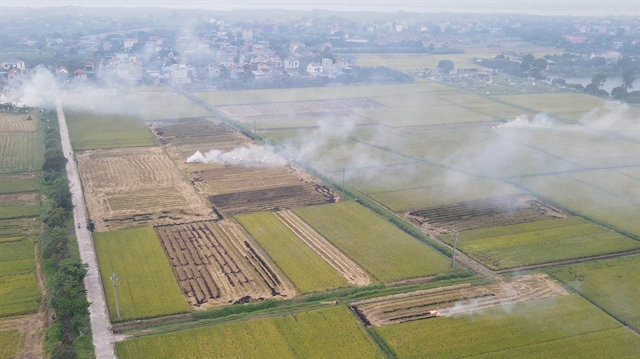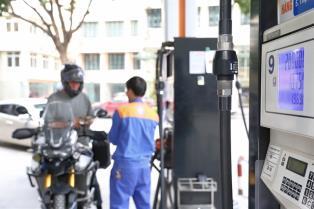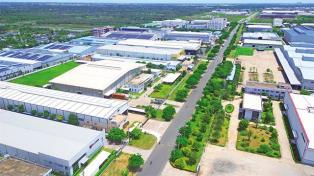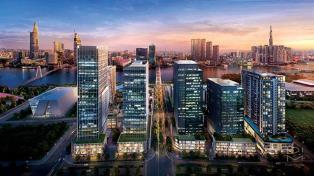“Straw is not a problem to be managed, but a solution to be exploited,” IRRI Country Representative for Việt Nam, Laos and Myanmar Robert Caudwell said.

CẦN THƠ — More than 100 million tonnes of rice straw generated annually in the Greater Mekong Subregion are emerging as a potential investment and a way to inject added value into the green economy, rather than an environmental burden, attendees heard at a workshop in Cần Thơ on November 18.
The workshop, titled 'Straw-based value chains: Policies and investment opportunities', was co-organised by the International Rice Research Institute (IRRI), the National Agricultural Extension Centre and the Việt Nam Rice Industry Association (VIETRISA) and brought together over 100 delegates from Việt Nam, Laos, Cambodia, Myanmar and Thailand.
Nguyễn Văn Hùng, an IRRI senior agricultural specialist and head of the Mekong-Korea Cooperation Fund's RiceEco project, said that straw can significantly cut emissions and boost yields when reused in the circular agriculture model.
Mechanised straw collection for the purpose of circular agriculture and reducing emissions has been recognised as a major technical advance in Việt Nam. The method has been integrated into the county’s one million hectare low-emissions high-quality rice programme in the Mekong Delta, he said.
Reusing rice straw is found to help reduce greenhouse gases, saving up to three tonnes of CO2-equivalent per hectare compared with burying straw in flooded fields. Meanwhile, yields increase by 10-15 per cent when farmers use compost from straw.
EasyFarm, an app developed as part of the RiceEco project, helps connect farmers with mechanised baling services and buyers, helping them to increase incomes and shift away from open-field burning to more environmentally friendly practices.
“Straw is not a problem to be managed, but a solution to be exploited,” IRRI Country Representative for Việt Nam, Laos and Myanmar Robert Caudwell said.
The material can be used in compost, livestock feed and mushroom production, helping increase farmers' incomes and reduce pollution, he said.
Straw management helps the country meet its green growth and net zero commitments, said Lê Đức Thịnh, Director of the Department of Co-operatives and Rural Development under the Ministry of Agriculture and Environment.
As the Government has approved the one million hectare high-quality, low-emissions rice programme, which is linked to green growth and Việt Nam’s 2050 net zero commitment, straw management is no longer a purely technical issue. Instead, it is a strategic pillar of the sector’s green transition.
“Without a clear solution for straw, goals for emissions reduction and upgrading the rice value chain will be difficult to achieve,” Thịnh said.
A biomass resource

Thịnh said that a legal framework needs to be developed for straw to be recognised as a biomass resource. Technical standards should also be issued for collection, processing, transportation and reuse of the material to create a solid basis for developing a straw-based value chain and market.
Co-operatives should have a stronger role in connecting farmers with processors to create high added value products from straw, he noted.
The department director added that financial mechanisms linked with carbon markets should also be developed to encourage both farmers and enterprises to develop circular agriculture.
Research from Cần Thơ University and IRRI shows that traders currently lead the straw-based value chain, with 32.4 per cent of the collected volume. Straw is mainly used for mushroom cultivation (17.9 per cent), animal husbandry (5.9 per cent), and crop cultivation (2.7 per cent). Mushroom cultivation brings the highest economic gains, with a value of around VNĐ6.7 trillion (US$254 million) per year.
However, the value chain lacks standards, an official platform and credit incentives.
Nguyễn Hồng Tín from Cần Thơ University said that straw should be recognised as a biomass resource with specific quality standards, credit support policies and integration into carbon mechanisms to build a more transparent and sustainable market.
“Once seen as a problem after harvest, straw is becoming a valuable product, with investment in collection and processing,” Lộc Trời Group Chairman Huỳnh Văn Thòn said.
“Every part of the rice plant can now be converted into high-value products, from organic fertiliser to bio-based plastics.”
Straw management is an issue not only for Việt Nam but also for other countries in the region, which urged the formation of an ASEAN Learning Alliance on circular straw management involving farmers, co-operatives, policymakers and businesses from five countries.
According to IRRI senior specialist Rica Flor, each country has different conditions, but the challenges of straw management are broadly similar. Through the alliance, stakeholders can learn from both successes and failures, adjust models to local contexts, and work towards shared goals of greener agriculture and lower emissions.
Experts at the workshop agreed that the practice of open-field burning must be replaced by a closed-loop value chain in which straw is collected, processed, reused and valued as a biomass resource.
With more than 100 million tonnes of straw generated each year in the Greater Mekong Subregion, this resource, if managed under a circular model, could be an important source for organic fertilisers, biomaterials, pellets, livestock and mushroom production, while creating a potential pool of carbon credits linked to emissions-reduction programmes. — VNS





